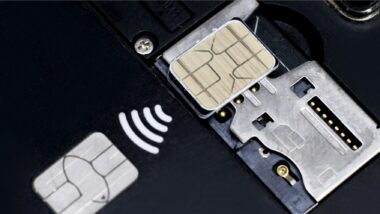A few weeks ago it was revealed that, for the first time ever, more British people are going online via their smartphone than via a laptop. According to the figures, Brits spend around two hours every day online using a smartphone, with over a third starting within five minutes of waking up. It’s a major milestone in how we access the internet, and one that’s likely to be mirrored in other countries where smartphones are widespread. Indeed, figures have shown that most smartphone users in France use them to go online several times a day, and almost one in five Americans relies on a smartphone for accessing online services and information.
However the trend also points to a need for improved mobile security. For many reasons, people tend to be less secure in their habits on their phones compared to the traditional desktop or laptop environment, assuming that a phone can’t be hacked as easily. For example, we’re more likely to stay logged into our most used apps or online accounts simply because it’s easier to do so, and the long-established username/password model can be difficult to use on a small screen – especially if you’re on the move. Fingerprint recognition has been hailed as a more appropriate security measure for smartphones, but that has also been proven to be vulnerable to hackers.
Given our increased use of smartphones to not just browse the web but access sensitive online applications for both personal and professional use – from online banking and government services to confidential work emails, our somewhat relaxed attitude to smartphone security is a worry. If the worst should happen and your smartphone is compromised, a hacker could access huge volumes of private data – and that’s why advanced mobile ID technology is so important.
So what’s the solution? Two-factor authentication has been proven to work in other scenarios, but for it to take hold in the mobile world it needs to be convenient and easy to use. So what better second factor than the device you’re using to get online – the smartphone itself. And to bring real protection to the authentication, this second factor also has to be very secure, and so therefore needs to go through the SIM or similar secure elements. This is exactly what we’ve developed with the Mobile ID solution. By offering users a convenient way to achieve smartphone security – one that doesn’t need you to remember multiple passwords or battle through unwieldy log-in processes – we can simultaneously improve the user experience while securing data from prying eyes.
As smartphone use continues to grow across the world, and as they become our primary means of accessing all sorts of online services, the importance of robust security will grow. The mobile industry and those developing mobile services need to address this issue now, before hackers have a chance to damage confidence in the platform as a whole.


